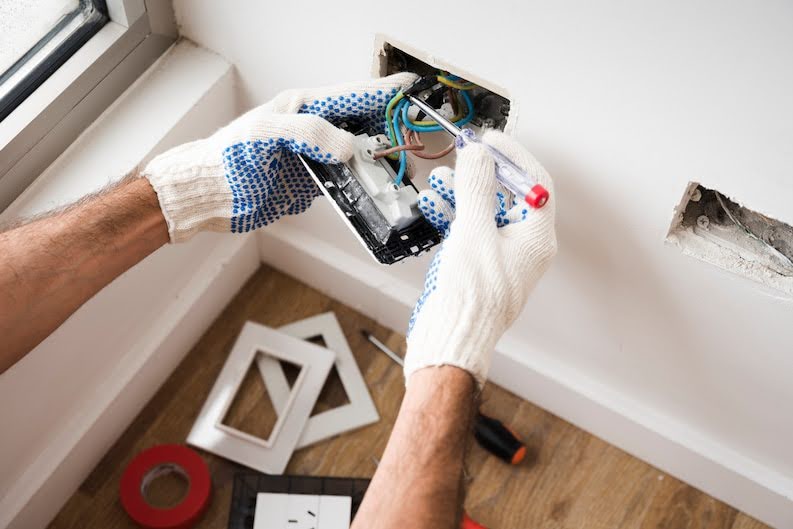The problem is most common in large family rooms, where people prefer to place furniture against the wall rather than in the middle of the room. The new owners discover that there is no outlet near the furniture after they have finally placed it. Installing a floor outlet is the only way to avoid an unsightly cable running across the rug. This can be a trip-hazard and also cause a cord to look untidy. If they need to cut a new hole in their carpet, without damaging it and then drill a hole into the floor, for the outlet box, and run wiring, it will cost twice as much as if the work was done during construction.
If you install recessed ceiling fixtures, this arrangement can eliminate the need for table lamps. As with floor outlets, adding them to your home after it is completed will cost a lot. Addition of overhead fixtures requires cutting holes in ceilings, wiring to wall switches and connecting them to an existing circuit. If a new circuit is required, a wire will also need to be run to the panel box. The effect is nice after the drywall is removed, but you will pay up to four times more than if the fixtures had been installed before the wall was drywalled.
New homeowners can also be frustrated when trying to add outlets in their kitchen because the cords and plugs get in the way when the appliances are placed against the backsplash.
It is difficult to imagine how you’ll use your kitchen, and where you want outlets for the coffee makers or mixers when the outlets are being installed. The house is still in the framing phase and you can only see studs. First, the homeowners should study their kitchen and where they currently have outlets. They should then study the electrical drawings of their builder, which show all the outlets and switches in the home. The electrician will need to spend more time in order to place the kitchen outlets where you want. You may be charged extra, but you’ll appreciate the convenience of your new kitchen.
Avoiding headaches in the future, particularly during Christmas season, is possible by planning ahead. While some buyers ask for wiring to be installed outside security lights before the holiday season, nobody thinks of hanging Christmas lights until after the holidays. This task will be much easier if you add wiring specifically for this purpose during construction. You won’t have to worry about cords dangling everywhere. If you want to install lights under the roofline, just beneath the eaves, then add an outlet and wiring there.
Most of the time, planning ahead and hiring an electrician in Auckland will save you the cost of installing the wiring after the house has been completed. Sometimes planning ahead will save you much more money. Whirlpool bathtubs are a good example. Some new homeowners spend up to $2,500 on a whirlpool tub, not because it is something they really want, but for resale reasons. Installing only the wiring is a much cheaper alternative. The jets and motor can be installed by subsequent owners if they so choose. You should check with your local building department before you do this, as some officials don’t like wiring that isn’t connected to anything. If the building department is willing, wiring the tub should cost less than $200. This would include adding an additional circuit to it.
Homeowners should consider installing extra phone and cable capacity in their new home, as households will become increasingly technologically sophisticated, particularly those with offices. The extra wiring is usually installed for a minimal price during construction, and can be used at a later date.
Cable Internet is accessible from the same outlet as your television, but most people don’t want to have all of these features in one place. He suggested that you install two outlets in rooms where both activities may be performed.

